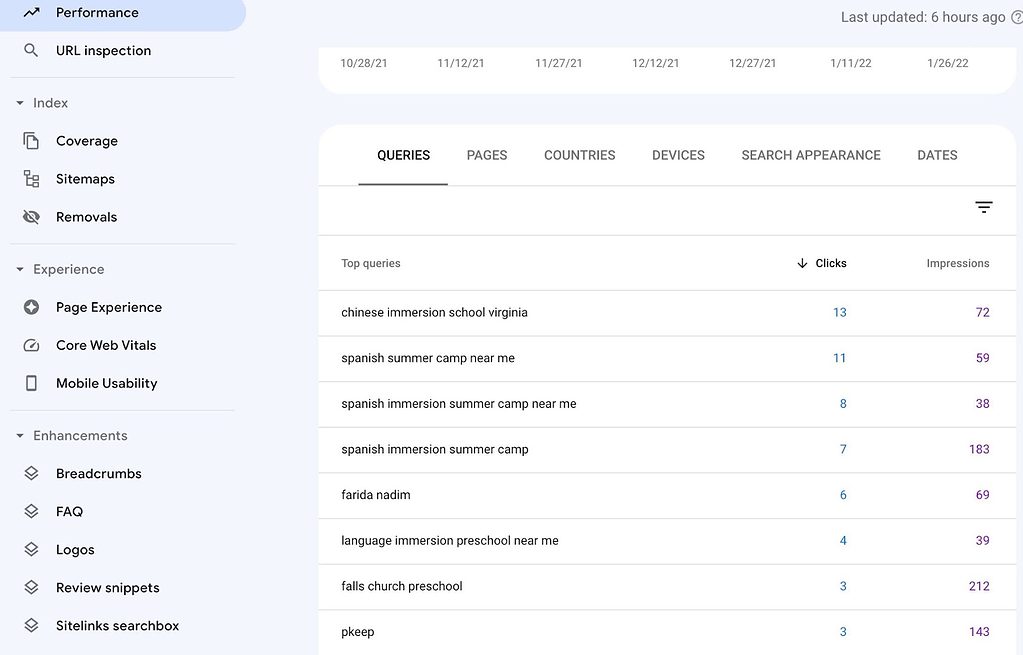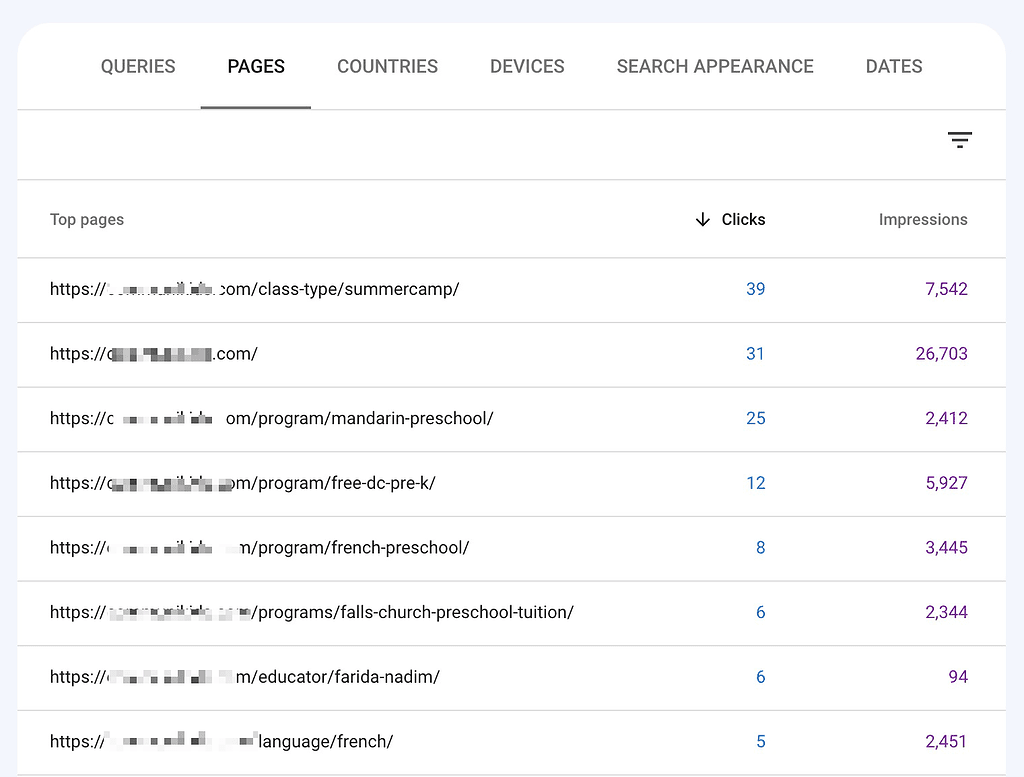SEO for Schools
Connecting keyword research to your target audiences and content in 2022

Statistics are out showing trends in Google Search in 2021.
- 93% of online experiences begin with a search engine. (Webfx)
- Only about 8% of online searches are phrased as a question. (Moz)
- After searching on a smartphone for something nearby, 76% of people end up on that business’ website within one day. (Intergrowth)
- There are roughly 86,00 Google searches occurring around the world every second. (Internet Live Stats)
- Google uses over 200 factors in its algorithm when ranking websites in searches. (Backlinko)
- In 2020, an estimated $79 billion was spent on SEO services. (Borrell Associates)
Did you know that 75% of Google searchers never scroll past the first page of results? Believe it or not, there is power in a Google search, power that can be harnessed to help your school, non-profit, or business through good Search Engine Optimization, or SEO.
If you haven’t heard of SEO, understand its effect on your marketing, or built your online marketing strategy around it, it’s not too late to start learning. In the chance you are starting in square one for your small school or nonprofit, fear not — reach out to us for an SEO consultation, and read up on SEO posts in our blog to familiarize yourself with SEO for schools. In this blog, we’ll dig into the importance of keyword research, how to assign those keywords to your different target audiences, and how to map out your marketing content to reach your audiences.
Whether you are new to SEO or a seasoned veteran, it’s important to understand that SEO for schools is not one big decision to implement that magically improves your marketing in one simple step. It’s a series of smaller choices and strategies to implement over time. There is a lot of research, trial and error, and finding a balance of what works for your marketing and what doesn’t. Good SEO is the foundation of a great marketing plan— keyword research is one of the smaller blocks that makes a big impact in the foundation.
What is keyword research anyways and how is used for SEO for schools and nonprofits?
Keyword research is creating and analyzing a list of valuable keywords that relate to topics in your SEO copywriting. Keyword research, while sounding simple, has quite a few steps to complete effectively. The steps for effective, productive keyword researching are below:
- Brainstorm! The most basic thing you can do as a starting point with your keyword research is sit down with a pad and pen and begin building lists. Think of a list of words that apply to your small school, business, and organization. How would you or your colleague categorize your organization? What are buzzwords related to your brand? What words make you unique in your industry? What are terms you would use to Google Search a business like your own? Aim for at least 100 of these words— some may sit on the sillier side, but they could lead to other words and phrases that are a great fit. Don’t limit yourself and be creative.
- Use Google to your advantage. According to HotSkills, 3.8 million searches are made every minute! Rely on your search engines to give you hints! When you start typing any terms into the Google Search Bar or your browser bar, you will see some “autocomplete” suggestions, where Google is guessing what you might be asking about or looking for. This is also a fun game to play if you check every few days to see what happens when you type “why”… and relate the search query to something in your industry.
- Find which keywords are used to find your business. There’s no way to improve if you don’t already know where you stand. Do some basic search queries until you find your business in the Google search rankings, and record which keywords are providing those results. You can also find these keywords in Google Analytics. Are the keywords specific? Are they vague? Add them to your growing list of keywords to test.
- Compare your competitor’s rankings. Look at other school’s listings in Google (the SEO Title and Meta Data) to get an idea of what keywords they are using to rank (remember, our goal is to get on the first page of a Google search). In Chrome, you can use Mangools or Moz Chrome Extensions, which help you identify these elements. SpyFu is a paid tool that looks deeply at your competitor’s keywords and gives you a downloadable list.
- Use a tool to help. At this point, you probably have a pretty overwhelming list of keywords. Narrowing down this is complex, but there are tools to help!
Our current favorite FREE tool is Google Search Console (GSC). If your site is connected to Google Analytics, you should make sure it is also connected to GSC. The data this tool provides is really helpful in identifying opportunities for keywords and search result/click improvement. For example, let’s say you run marketing for a small private school. Looking at GSC “Performance,” you see “Queries” and “Pages.” These show you data for how many impressions your specific website page has had (how many times it has shown up in a search result) and how many times people have clicked on it. If you see that a search term (“Query”) has a lot of impressions on 0 or very few clicks, that may indicate an opportunity to improve the search result appearance for that page (the title and meta description).


If you put the query term into the Yoast keyword tool, you can also identify areas for improvement in your content to better optimize the page for SEO. Doing this work will likely help your rankings in Google searches, while also improving your CTR.
For even more data and tracking, you will need to use a paid tool. We recommend KWFinder by Mongools, and SEM Rush. Other great options include Moz and aHrefs. These tools will show you the search volume for your keyword list and the competitiveness of each word, and will help you find the best opportunities for you to rank in searches. If you’ve gone through these steps and still aren’t seeing the success you’d like, please contact Design TLC to help you through the process!
Understand your audience personas to boost SEO
Another step in keyword research is understanding who makes up your target audiences. Ask yourself this question: Who Do You Serve? Are you a small private school that serves families and children with special education needs? Are you a nonprofit organization that serves the homeless community in your town?
Think about who you serve and how that can tie into their website personas. A persona is a fictitious being that meets all the criteria of a customer who would do business with you. These personas can communicate behaviors, wants, needs, and frustrations of your target audiences, and are a great design tool for boosting SEO.
By understanding your customer personas inside and out, you will be able to develop your keyword lists by putting yourself in the shoes of your customers. If you were your own customer, what would you look for online to find you on Google? Is what you’re looking for currently on your website and easy to find? It’s also important to recognize that you most likely serve a few different audiences, not just one. So it’s crucial your marketing plan, SEO efforts, and website all serve each persona individually to meet their unique needs.
Once you recognize and understand your audience personas, you can develop search terms and content around their needs and goals.
Use your keyword search data to build content
Every member of your target audience will go through a variation of the same process when it comes to decision making, possibly deciding whether or not to engage with their business. The journey is Awareness, realizing there is a need or gap that needs to be filled, Consideration, balancing options and weighing different solutions, and Decision, making the choice to engage or not to engage with your business. If you understand your target audience’s needs and arrange your keyword search data to your advantage, you’ll see the positive effects in sales, retention rates at your school, etc.
The content on your page is the more important element of SEO. If your page does not have enough content and if the content does not include the use of the keyword phrase, it will not rank for that term. Using a tool like Yoast or SEOPress on your WordPress website will help you identify areas for improvement in your content to help it rise in the search results.
SEO and all of its facets (like keyword researching) are complex, but incredibly helpful in your marketing. If you haven’t penciled in an SEO strategy for 2022, go ahead and make that change. When done correctly, the benefits of good SEO are endless for your marketing. Not only are you serving your target audiences with the information they are searching for quicker, but you are helping your rankings in Google search queries.